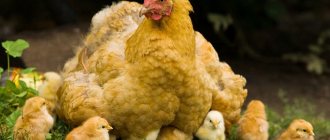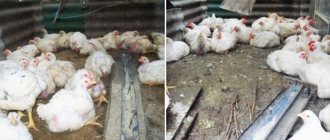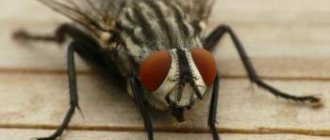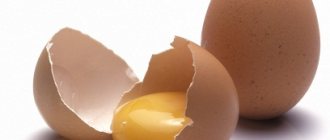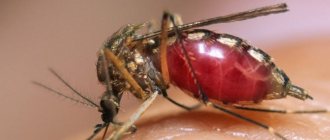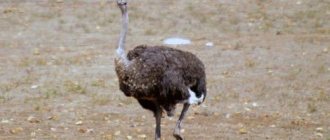Poultry farming » Geese
0
2238
Article rating
Kira Stoletova
Humanity domesticated geese 3-4 thousand years ago and since then the birds have proven their benefits many times. They once saved Rome by waking up the sleeping guards when the Gauls were about to sneak inside. Nowadays, geese are usually bred for their eggs, meat and feathers. The business turns out to be very successful, but only on the condition that the breeders know all the nuances, and breeding geese is different from raising chickens and ducks. For example, if a businessman did not find out in advance how long the goose has been sitting on eggs, he will probably face disappointment and losses.
How many days do geese hatch eggs?
Features of breeding domestic geese
Most goose breeds have a low level of egg fertility - up to 70-80%. And the average survival rate of chicks varies from 60% to 80%. Therefore, it is difficult to breed goslings.
You can get a brood in two ways: naturally and incubation. If geese have a poorly developed egg-hatching instinct, it is advisable to use an incubator. With natural incubation, the hen will independently breed goose offspring.
Despite the labor-intensive process, artificial hatching of ducklings is much more effective than natural hatching.
FAQ
Often, beginners do not know what to do in a given situation, so they have many questions:
What to do if a goose buries eggs but does not sit down
Geese bury eggs in the litter, obeying instinct. The hen will sit on the nest when there are at least 5 eggs in it. To prevent the first ones from freezing, the female hides them and insulates them. Geese are not stupid birds. The female may hide the eggs from the hosts who collect them.
Is it possible to place chicken eggs in a nest?
If you put chicken eggs under a goose, can you expect healthy offspring? It is not recommended to do this, since a large hen can crush eggs that have a much thinner shell than a goose shell.
Why does a goose throw out eggs?
Goose throws out eggs
There are times when a mother goose rolls eggs out of the nest. The reason may be:
- there is an excessive number of eggs in the clutch, and the goose instinctively understands that it will not be able to heat everything;
- the bird independently identifies and removes eggs with frozen embryos, unfertilized and spoiled.
When geese of different breeds begin to lay eggs
Most geese begin to lay eggs 8 months after birth. For example, Toulouse, Lindov, Demidov and Kuban. Some large geese are ready to mate a month later. This is a Gorky goose, a Danish legard.
Puberty of the gray goose occurs at 10-11 months, in the Kholmogory female - only after 3 years.
Typically, geese lay eggs in mid-February - early March. You can determine the female's readiness to begin laying by her behavior.
The bird becomes restless, walks nervously, digs around, and its tail droops. She begins to build herself a nest. Carries pebbles and straw in its beak to the intended laying site. Pulls the fluff out of the chest and puts it on the bottom.
The closer the time to rush, the more clearly the signs are expressed. Immediately before laying, the goose sits down near the nest.
Making females feel maternal feelings
In fact, the important question is not how to get a goose to hatch eggs, but why she doesn’t do it. Once the problem is identified, placing the bird on the clutch becomes a matter of technique. Brooding problems are most common in young females. It's not a matter of desire, but the fact that they don't know how to sit on the masonry.
- One possible solution is to force the females onto the nests and cover them with boxes. After some time, you can see them voluntarily sitting on their clutches. How to do this is easy to see in the video.
- When looking for reasons, you should once again consider the conditions of detention. A hen may refuse to hatch chicks because the coop is too dark, light, or cold.
- After the eggs are laid, they are collected. They can be stored in a box with straw at a temperature of no more than 20 and no less than 15°C. Females refuse to sit on eggs if they are first collected and then laid again. At least one egg or its dummy must remain in the nest. After several days of storage, the nest can again be filled with future goslings; all that remains is to wait for their appearance.
- During the incubation period, it is worth candling the eggs from time to time. A simple procedure will allow you to determine whether there is an embryo under the shell and how it feels. It happens that mold develops inside. The goose continues to sit on such eggs, pointlessly wasting her time on them and endangering the rest of the children.
How many eggs can geese lay?
Compared to other types of poultry, geese have low egg production - an average of 30-50 eggs per year. These are large meat breeds: Kholmogory, Toulouse, large gray, Lindov, Danish Legard.
With proper maintenance, average breeds of geese bring up to 80-90 birds per year: Gorky, Hungarian white. Kuban and Chinese geese are capable of laying up to 100 eggs.
Peak egg production in all breeds of geese occurs in 2-4 years of the bird’s life. Read more in the article “How many eggs do geese lay?”
Gander replacement
When geese are kept for a long time, without changing, family ties begin. Against this background, egg production, fertility, and offspring survival rates decrease.
To avoid this, it is recommended to change the gander every 3-4 years. To do this, they take an egg or new offspring from a breeder, preferably from another area.
The survival and viability of young animals is increased by mixing the genes of the two breeds. Pairs are specially selected from among individuals with a similar diet and maintenance. For example, they take a female of the egg-laying breed (Toulouse, Gorky), and a gander of the heavy variety (Shadrinskaya).
How to choose a good hen
When the goose sits tightly in the nest to lay eggs, you should choose a diligent and responsible hen.
Preference is given to females aged 3-4 years. Young geese often leave the nest for a long time or abandon it altogether. Older females increasingly refuse responsibilities.
Cooked eggs are placed under the hen (more on this below), creating a calm and darkened environment in the poultry house. The bird is observed for 3-4 days. If, when a person or pet approaches, the bird does not leave the nest, shows restlessness and makes hissing sounds, then the hen has been chosen correctly.
If there are several breeds of geese on the farm, the best hen will be a lighter bird: large geese can damage the clutch with their weight. Ideally, when a goose of medium size sits on the eggs.
It is not recommended to transplant a goose from a nest to another place - this can become stressful for her and she will abandon the clutch.
Hatching process
The hatching process is characterized by the following features:
- hens scoop up the entire masonry;
- birds periodically turn over eggs, moving those located on the edges to the center;
- During brooding, appetite decreases.
During hatching, it is recommended to immediately remove damaged eggs upon detection. This will help prevent the spread of infection. You should also spray the nest with water heated to 40 degrees from the 15th day, shortly before the goose returns.
See also
Description and characteristics of Hungarian geese, pros and cons of the breed and careRead
How to prepare nests for laying hens
A month before the start of laying, the nesting site is prepared. It’s good if the goose chooses a place for hatching chicks herself where she feels comfortable. More often, the female sits on the same place where she was already rushing.
If this does not happen, choose a place for nests on the south side of the goose nest, not in direct sunlight and as far away from other birds as possible.
The number of nests depends on the number of geese in the herd: nesting space for 1-2 individuals. For its construction, building materials that can be found on the farm are suitable. Most often this is a tree. Necessary condition: it must be clean from mold, dust and dirt.
When installing previously used nests, they must be disinfected with manganese or soda solution. After treatment, the nests must be thoroughly dried naturally.
A wicker willow nest, which looks like a natural one, will also be convenient for the goose. Read how to make it in the article “How to make a nest for geese with your own hands.”
The necessary conditions
To make the incubation process more successful, farmers provide the birds with nesting conditions. To obtain fertilized eggs, up to three females are counted on one gander. He will not be able to fertilize more. You need to take care in advance of secluded and fully equipped places for expectant mothers: build nests, fence them off from each other and from the gander.
To increase the egg production of geese, it is also important to observe several conditions:
- Before starting laying, fatten the geese by 500 grams, because during hatching they will lose weight.
- Use high-quality feed when feeding geese. Feed for laying hens is perfect; boiled vegetables and herbs are added to it.
- Regulate the number of eggs under the bird. From under the small goose, those fruits that it does not cover with its body are removed, and they are placed under large individuals.
Why did the geese stop laying eggs?
If the laying period has already arrived, but it has not yet been possible to obtain eggs from poultry, then it is worth reviewing the conditions of its keeping. Most often, masonry is missing precisely for this reason, or more precisely, because of an incorrectly selected diet. In this case, a large number of birds or the entire goose colony will not lay eggs. If one or two “tested” birds do not want to breed, this may indicate their illness. It also happens that the farmer does not notice the eggs in the nest, as the birds bury them and hide them.
The reasons why poultry do not lay eggs may be:
- Lack of vitamins, succulent feed and minerals. It is necessary to include vitamin mixes in the diet, including vitamin A and fish oil. As well as fresh herbs and vegetables: nettles, clover, grated carrots.
- Poor, monotonous food. A constant, stable menu every day will not benefit the geese.
- Starvation. Future hens must gain the required weight in order to develop physically.
- Cold. In a goose barn with a low temperature, below -15, the birds will spend a large number of calories on heating. An exhausted bird simply will not be able to begin its productive period in the spring.
- Incorrect daylight hours. In order for a bird to lay eggs well, its daylight hours should be close to 14 hours.
- Health problems. With diseases such as prolapse of the oviduct, vitelline peritonitis and vitamin deficiency, it is not even worth talking about creating a clutch.
How many different breeds of geese sit on eggs?
As we said above, how many days geese hatch eggs is influenced, first of all, by their breed. As well as the number of clutches.
Basically, after the end of winter, females lay eggs once. These are Toulouse, Kholmogory, Lindovsky geese, and Danish Legard.
Demidov breeds, large gray ones, can hatch 2 clutches per year - even in the autumn. This happens less often and under properly organized conditions.
If the farmer does not plan to hatch the chicks and removes the clutch, the goose will repeat the attempt to hatch the chicks in 1-1.5 months.
To force the bird to increase the number of clutches, it is necessary to place the nests again and extend the daylight hours in the house to 14 hours. It is advisable to provide the female with pasture walking with additional protein and mineral complementary foods.
30-32 is the optimal number of days for geese to sit on eggs.
On average, one goose hatches from 15 to 30 goslings per year.
Winter egg laying
In order for the goose to lay eggs well in winter, you need to create the most comfortable conditions for wintering and introduce an appropriate winter diet.
Poultry house arrangement
To build a winter poultry house, durable wood or brick is used. In cold weather, the room temperature is maintained at least 3-5 degrees. Ideally, it is better to maintain 13-20 degrees. The fact is that geese are not afraid of the cold, and are only indoors at night, in severe frosts and windy weather, but in a warm room egg production increases. But dampness is destructive for them, so air humidity should be maintained at 30%.
Special conditions are required for winter:
- the windows of the poultry house should initially be equipped with vents to close them at night in low temperatures and wind;
- the roof and floor are also additionally insulated;
- it will be necessary to provide artificial lighting, which should maintain the light regime for 13-15 hours a day;
- You can walk birds in the yard, but first the walking area is cleared of snow;
- For swimming, birds are provided with an ice hole in shallow water, which is fenced with a wooden barrier or metal mesh to prevent them from diving; a straw flooring is made around such a reservoir, where the geese can lie down.
Winter nutrition
Proper nutrition in winter is necessary, and the most important task of the farmer is to maintain the weight of the bird, since it affects the egg production of geese not only in cold weather, but also in spring and summer. Laying hens are given grain, fresh hay, boiled root vegetables, sauerkraut, steamed chaff, as well as vitamin supplements
In the evening they feed with grain. Closer to February, meat and bone meal, chicken yolks, cottage cheese and fish are introduced into the menu, and the amount of grain is doubled. In the absence of cereals, they are replaced with soaked peas in combination with boiled potatoes
Laying hens are given grain, fresh hay, boiled root vegetables, sauerkraut, steamed chaff, and vitamin supplements. In the evening they feed with grain. Closer to February, meat and bone meal, chicken yolks, cottage cheese and fish are introduced into the menu, and the amount of grain is doubled. In the absence of cereals, they are replaced with soaked peas in combination with boiled potatoes.
Meals in winter should be three times a day.
Masonry control
Checking the eggs
Before placing the eggs in the clutch, they are checked for cracks, roughness and contamination. It is not recommended to place too large eggs under the hen, because they may contain two yolks. And also newly laid and small eggs.
To check for fertilization at home, eggs are examined with an ovoscope or a flashlight. The procedure is performed: 3-4 days after incubation, 8-10 and 29-30 days of incubation.
The testicle is fixed and illuminated with a powerful lamp. The method allows you to control the development of the embryo at its different stages. If the embryo is abnormal or completely absent, the egg is removed from the nest.
Signs of bad eggs:
- the inside looks like a uniform light spot - there is no embryo;
- dark rings appeared along the axes - the embryo was frozen;
- the internal contents look like a solid dark spot - the embryos are dead.
Do I need to turn and water the eggs myself?
It is advisable that hens bathe periodically and moisten their testicles with wet feathers. If this is not possible, the clutches are sprayed with water daily throughout the entire incubation period. From 5 to 30 days, potassium permanganate is added to the water.
Usually the goose moves the clutch itself. Therefore, the farmer does not need to do this. The exception is when he is forced to transfer the eggs to an incubator. For example, if the female refused to hatch them.
Then the eggs are turned over: on day 1 - once, on days 2-29 - every 3 hours at regular intervals. The remaining requirements are described in the article “About incubating goose eggs.”
Preparing the premises
The poultry house for geese must be arranged in advance. It is better to have windows facing south or southeast, on the leeward side of the residential sector. Although the room should be bright, too many windows will contribute to overheating on hot summer days and excessive cooling in winter.
In addition, you cannot install a building on an area with a groundwater level more than 2 m from the ground surface, since it may be flooded during heavy rains or floods. For ease of feeding, the height of the house can reach 1.7 m.
To prepare a home for laying hens, you need to:
- adjust the temperature - the most comfortable temperature for laying hens is considered to be from +20 to +25 oC;
- the floor of the room should be covered with sawdust and straw in a layer of 5 cm;
- usually there is one box with nests for three females; they need to be covered with warm cloth; if possible, it is better to keep the hens separately;
- the nests should be 50 cm wide and high, 60 cm long, a 10 cm high side should be made in front so that litter and eggs cannot fall out of it;
- It is better to whitewash the walls, external and internal;
- There are several pallets of sand in the room;
- it is desirable that the geese be kept in a separate building, away from other poultry;
- cracks and cracks must be sealed, as drafts are unacceptable.
In warm, clear weather, geese are walked in meadows with lush, but not tall grass, where every day one adult bird eats about 2 kg of grass. If the pasture cannot provide sufficient food, the geese are fed additionally in the evening.
In hot weather, it is important to install a canopy for the birds or drive the laying hens into the shade of deciduous or fruit trees, where they can hide from birds of prey and rain. If there is no pond, the birds are given a trough up to 25 cm high and constantly ensure that the water in it is fresh.
Possible problems and their solutions
Why don't geese lay eggs?
Sometimes geese refuse to lay eggs. Before you decide what to do, you need to find the reason. Lack of desire can be caused by late or cold spring, poor living conditions: short daylight hours, monotonous diet, low temperature.
Perhaps the bird is too young and its genitals are underdeveloped. Or the opposite situation - old age. Older geese not only lose the desire to lay eggs, but also develop ailments that aggravate the situation:
- paralysis of the muscles of the oviduct;
- vitelline peritonitis;
- avitaminosis;
- contusion of the lower body cavity;
- tongue retraction.
An examination by a veterinarian will help resolve the problem. If the situation is difficult and the treatment of the hen is not worth the effort, she is slaughtered.
Other common reasons are described in the article “Why Geese Don’t Lay.”
Why do geese refuse to hatch their offspring?
If a goose refuses to hatch eggs, it may be that her maternal instinct is not developed. This occurs in Adler, Rhine, Emden, and Toulouse geese. Females of the Danish Legard breed also rarely sit in the nest.
A pattern has been noticed: the larger the representatives, the less pronounced the instinct to hatch offspring.
Other reasons: malnutrition, overeating, vitamin deficiency. Solution: adjust your diet.
When geese begin to refuse to lay eggs, you can place the laid eggs under another goose, chicken or turkey. Read more in the article “How many eggs should you put under a goose?”
How to place a hen on a clutch
To place a “naughty” hen in the nest, follow the following tips.
You can place plaster or plastic egg dummies in the nest. A lot of eggs stimulates the female to sit on the clutch. Subsequently, replace the decoys with real ones while the bird is not around.
Another option is to place a stuffed hen in a nearby nest. And finally, force the female into the nest, covering her with a spacious box. You will find more information in the article “How to put a goose on eggs.”
Observations of a hen
The farmer must watch the geese hatch their eggs. Some females often leave the nest and take long walks. Such birds are covered with a box to limit their freedom.
Other hens rarely leave the nest, and if they leave, they quickly return, preventing the eggs from cooling. Such females are fed while they are in the nest, from time to time they are forcibly removed from their place and are not allowed to return before an hour later.
What to do if the hen sits longer than expected
Above we wrote about how long geese sit on their eggs. Sometimes this deadline is delayed by 4 days. This is a normal phenomenon and is associated with insufficient hydration of the egg, which was not properly kept in the incubator before lining.
If the chicks have not appeared even on day 37, most likely the embryo has frozen. The eggs are checked using an ovoscope or placed on a smooth surface and the movements of the embryo are observed. If the duckling is alive, the egg is transferred to the incubator.
Delay in hatching of the chick up to 40 days - the embryos died.
The female throws the eggs out of the nest
If there are more eggs in the nest than the hen can warm, she throws out the extra ones. The female does the same if any egg is defective or spoiled. Such copies are disposed of.
Growing
Unpretentious to weather, living conditions and food, domestic waterfowl grow quickly and weigh 3–3.5 kg by two months. By this time, poultry meat has acquired the necessary nutritional qualities, is juicy and soft, and can be easily cooked. Has the highest market value. Mixed feeding of poultry (greens and grains) allows for later slaughter.
They determine how long to raise poultry for slaughter individually, but in this case it is not worth keeping it for more than 5 months: the meat will become tough, it will be more difficult to sell it, the cost will increase, which will significantly reduce the profitability of the enterprise. The time of slaughter of a bird is determined by the absence of stumps of new feathers after natural molting. To check, you need to hold your palm against the growth of the feather, determining by touch the presence of stumps.
Did you know? The domestic goose is a long-liver and can live up to 30 years.
Caring for goslings in the first days of life
The first ten days for goslings without a hen is the most crucial period, especially for beginners.
Key points in caring for babies:
- Housing arrangement. The room should be warm, without drafts. Temperature - +27°...+29°С, area at the rate of 1 m² per 10 goslings, large sawdust as bedding. Along the back wall there is a place for the chicks to rest, on the opposite wall there are feeders and drinking bowls. Heating and sufficient lighting (up to 20 hours a day) will be provided by an infrared lamp.
- Nutrition. The goslings' food should be crumbly; sticky food can get into the chicks' respiratory tract. Bone meal, low-fat cottage cheese, eggs are mandatory food for early-age goslings. On the first day, babies are given only a hard-boiled egg mixed with a small amount of water. Starting from the second day, you can gradually mix in crushed grain, preferably corn, and gradually introduce crushed barley and wheat into the diet. Babies need to be fed every three hours. On the second day, greens are introduced into the food: chopped nettles, young onions, Chinese cabbage, young lettuce. Greens make up half the amount of feed. The main rule is that the grass should be juicy and fresh.
- Walking and swimming. Starting from the third day, the babies are allowed to go for a walk, even if they grow up with a mother hen and the weather is sunny. In cold, windy weather, it is better to leave the goslings in the barn: the unpretentious chicks are afraid of drafts and cold. A small container of water is placed in the yard for the goslings to swim. You need to make sure that kids don’t oversupply. The mother goose knows very well how long the chicks need to stay in the water; without it, the babies need to be sent to a dry room after 30 minutes.
- Vaccinations. The first vaccination is against salmonellosis: on the third day after birth, if the parents were not vaccinated; on the 10th - if the adult herd was vaccinated. A second vaccination against viral enteritis is mandatory, otherwise the entire herd may die. The vaccination is given with a live vaccine on the 28th day after birth. To prevent colibacillosis, children are given a drink instead of water for the first three days: propionic acidophilus broth culture in the proportion of 10 ml of water to 1 ml of the drug. Without vaccinations, breeding geese involves the risk of disease affecting the entire flock within a short time.
Care in the first weeks
The goslings grow quickly and adapt to their living conditions.
Did you know? The excellent hearing of geese allows them to hear within a radius of 50 m.
Experienced poultry farmers advise how to raise healthy chicks without the risk of death in the first month:
- after a week, reduce the number of feedings to six, increasing portions by a third. Chopped peas, boiled potatoes, carrots are introduced into the diet, mixed with yogurt or skim milk. Add fish oil. The water in the drinking bowls is constantly replenished. Chicks get the main amount of vitamins from fresh greens, which make up half of the goslings’ feed during this period.
- In warm weather, the goslings are driven out into the yard for the whole day. They determine how long the goslings bathe by looking at their plumage: until the main feather appears - no more than 20 minutes without a break. The down of babies gets wet quickly, the chicks become hypothermic and get sick.
Care after the first month
Four-week-old goslings are covered with real feathers, after a month they can be driven out to a pond, their feeding schedule is morning and evening. Being in nature all day, the young animals find food on their own: greens, bugs, and midges make up the diet of adolescents and nourish the body with vitamins. On the water, geese become stronger physically, quickly gaining weight. When raised in a pen, feeding is carried out three times. 60% of the volume is greens; there should always be clean water in the drinking bowls. They dig in a large container for swimming, compensating for the lack of a natural reservoir.
Did you know? Tibetan monks consider the goose to be the incarnation of the god Shiva; the ancient Romans considered the clawed bird to be the favorite of the god of war Mars.
The appearance of chicks and nutrition in the first days of life
Before they hatch, the goslings begin to squeak, warning of their arrival. The hatched chicks are taken away from the goose and placed in a separate box. After all the babies appear and the hen leaves the nest, the brood is released back to its mother.
For a month, it is better to keep the goose and chicks in a separate enclosure to protect the babies from dogs, cats, small rodents, and adult geese.
The first menu of goslings consists of crushed boiled chicken eggs mixed with cottage cheese and a small amount of herbs. The article “What to feed geese from the first days of life at home” will familiarize you with other nuances of feeding.
If the article was useful to you, please like it. By sharing your experience in the comments and reposting the article, you will spread useful information.
Hatching time
The last stage of incubation is the direct hatching of healthy and strong poultry offspring. As a rule, all the chicks hatch at about the same time, especially if you have cared for them correctly and provided good conditions. As a rule, goslings hatch on time - on days 29-31 of incubation.
To do this, you will need to expand the existing hole as carefully and carefully as possible, which the gosling managed to break through with difficulty. But at the same time, the entire shell does not need to be broken. When the hole reaches a size that will allow the baby to get out, he will do it immediately, nothing more will be needed from you.
The chicks will need to be immediately “relocated” from the incubator to a special brooder or sludge - different farmers act differently. In these devices, birds will have to be absolutely dry and warm. As soon as the young animals dry out completely, they can be fed a little.
Puberty period in pigeons
From a biological point of view, puberty in pigeons, regardless of species and breed, occurs approximately 6–7 months after hatching from the egg.
However, this does not mean that six-month-old chicks are ready for active birth of offspring. The fact is that young individuals are often not able to give birth to healthy offspring, since their body is still in the process of active development. Did you know? Pigeons were domesticated by humans in Ancient Egypt in the 3rd millennium BC. e.
That is why fragile organs and systems of young pigeons can have an ambiguous effect on the development of the fetus inside their body, which quite seriously affects not only the selection significance of the resulting chicks, but also their health.
The most favorable period for breeding pigeons begins at the age of 1–2 years and, depending on nutrition and living conditions, can last for 5–12 years.
We recommend that you learn about diseases of pigeons that can be dangerous to humans.
Where to store eggs after collection
To get the freshest eggs possible, pick them up from the nests while they are still warm. As soon as the goose starts laying eggs, make a round of the house every hour.
The shell of a newly laid egg is so fragile that it is easily damaged. Take it carefully, with two fingers, holding the blunt and sharp ends.
Place hatching eggs horizontally in an egg carton in a cool place where the temperature is at least 8 degrees. Cold air forms a cushion at the blunt end, facilitating the flow of oxygen into the chamber.
The hatching egg is laid in one layer, otherwise there is a chance that the lower layers will be crushed.
The testicles must be washed from droppings and dirt in a weak soda solution, but no later than two hours after collection. This way you will prevent the development of harmful microorganisms on the surface, which can subsequently destroy the embryos.
